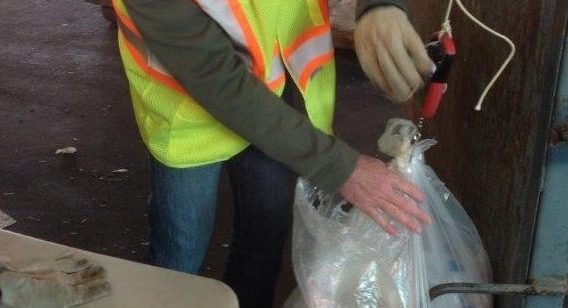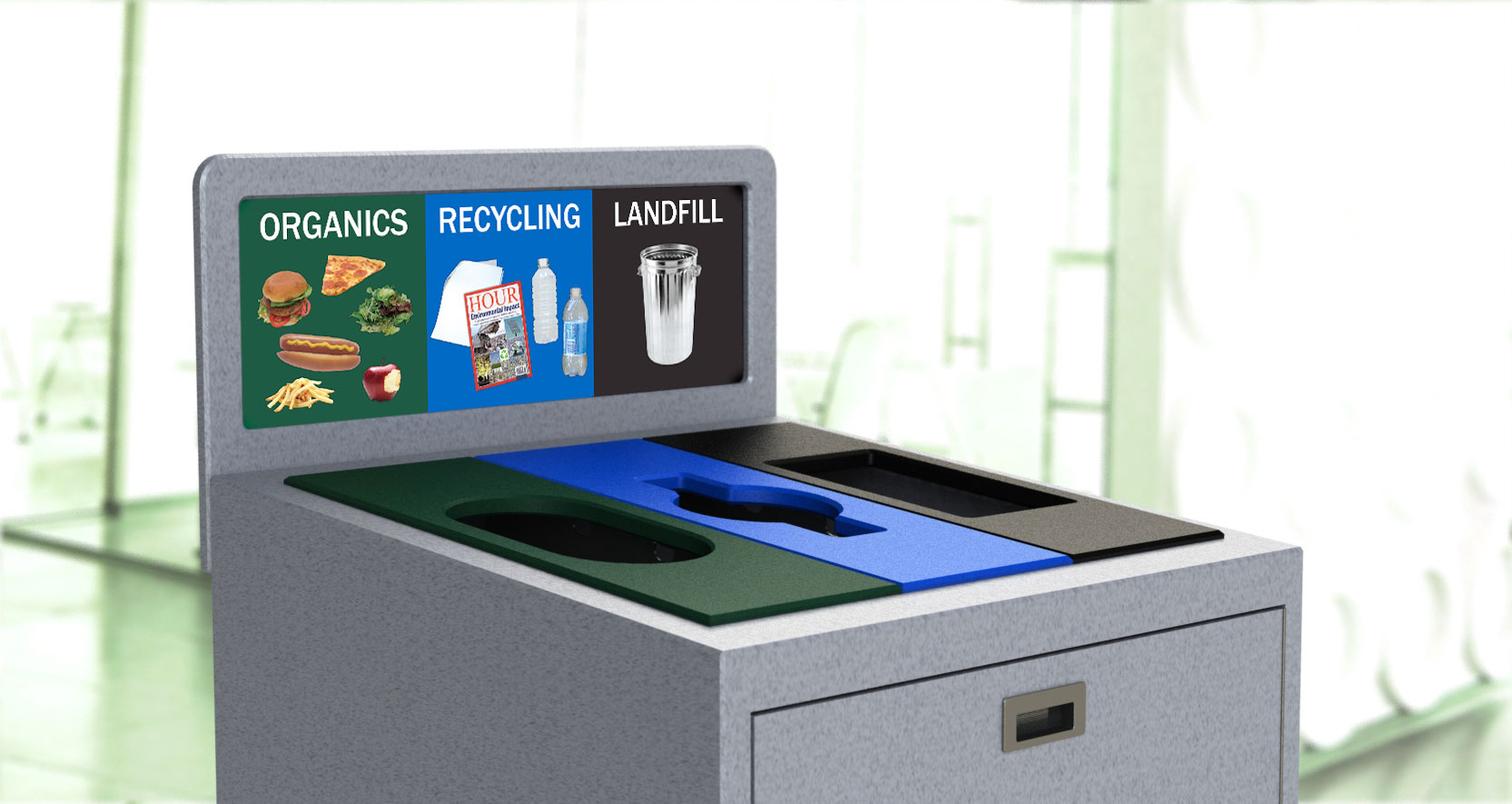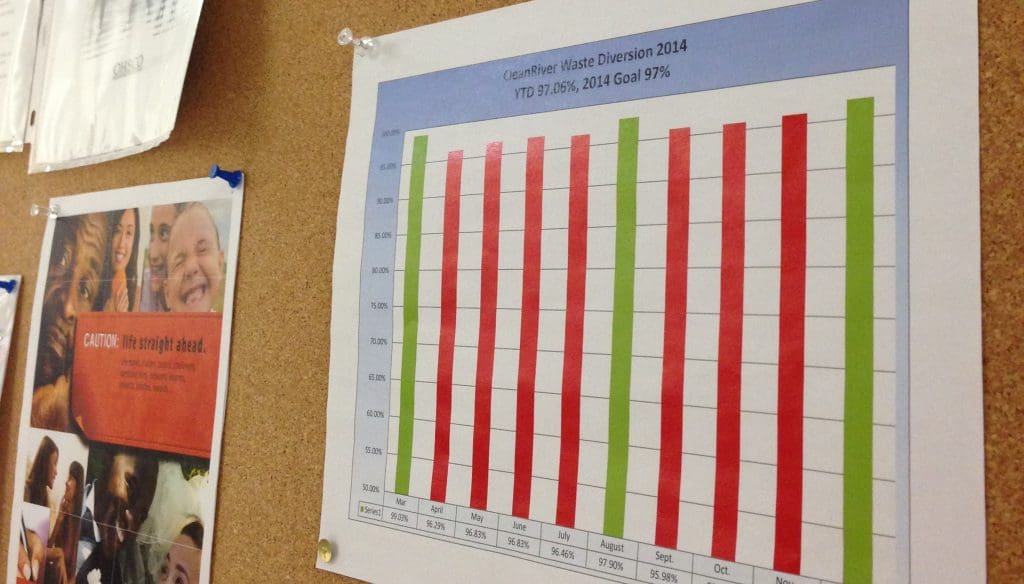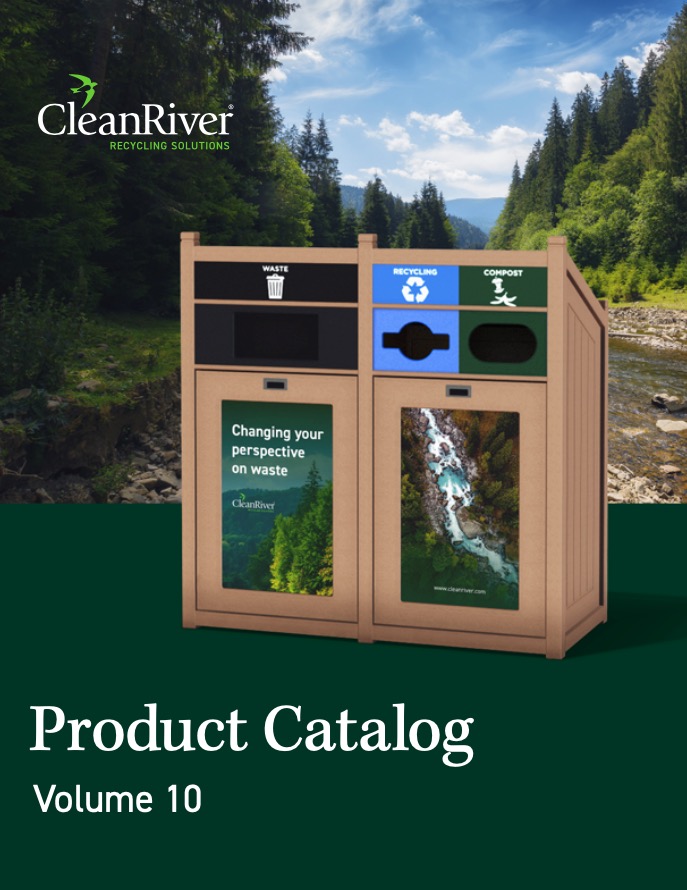Share
Assembly Bill No. 1826 comes into effect in California in April 2016. It requires all businesses that generate more than 8 cubic yards to arrange for this waste to be collected and recycled. This bill joins a growing number of mandates and legislation’s in North America requiring businesses to recycle their organic waste rather than sending it to landfill.
Whether you’re being mandated to collect organics; or whether you see the positive impact it can have on your diversion goals (organic waste is heavy!), here are 8 things you should do to ensure your program is a success.
8 Steps to Organics Collection Success |
|---|
1. Find out how much waste you collect
Conduct a simple waste audit to determine the volume of waste your facility generates in one week. Visually assess the waste to evaluate how much of that waste is organic. Once you know how much you produce you’ll know what capacity of bin you’ll need.

2. Determine where you are generating organic waste
This will help you calculate how many bins you need and where to place them. Common places are cafeterias and kitchens, meeting rooms, hallways and in communal office areas. Some organizations (like CleanRiver) have a green Mini Bin to collect organics at each desk; the employee is then responsible for emptying their organics Mini Bin into the nearest central location.
3. Determine the opening shapes and size
These may differ depending on location. In the cafeteria for example you may be collecting compostable plates, cutlery and clamshells so the openings need to be large enough to accommodate these.

4. Decide on whether you need a lid
Most people are concerned that organic waste is going to smell. This isn’t the case if the bin is emptied frequently but it’s a good idea to have a closure on the stream to keep out flies and other pests.
5. Use clear graphics that tell people what’s organic
Many people don’t know that paper napkins and coffee filters are compostable for example. If you are using compostable plates and cutlery show an image of this on the container graphics so people know it’s compostable and not recyclable. You don’t want to contaminate your recycling stream!
Matching the color of the opening plates with the graphics also helps people make the right choice.

6. Launch the program
It’s really important to let your employees and customers know about your new organics collection program. Tell them where the new recycling bins are and what they collect. Your new program needs to have awareness for it to be successful. Continue with regular updates and promotion of the program to ensure that it’s top of mind for everyone.
7. Communicate your progress
Use your waste hauler reports to see how much organics waste you are diverting from landfill and tell everyone about it. It shows your customers you committed to making a difference, and it encourages ownership of the program for employees once they see the results their efforts are contributing to.
8. Measure and assess
Check your organics stream often to see if there are any sources of contamination. At CleanRiver we post pictures of any contaminants on our notice boards and tell everyone about them at our monthly meetings. It helps people make better choices and keeps the program top of mind.
For more information or to get a quote on any of the CleanRiver organics collection containers please call 1-888-646-4246 or email solutions@cleanriver.com




